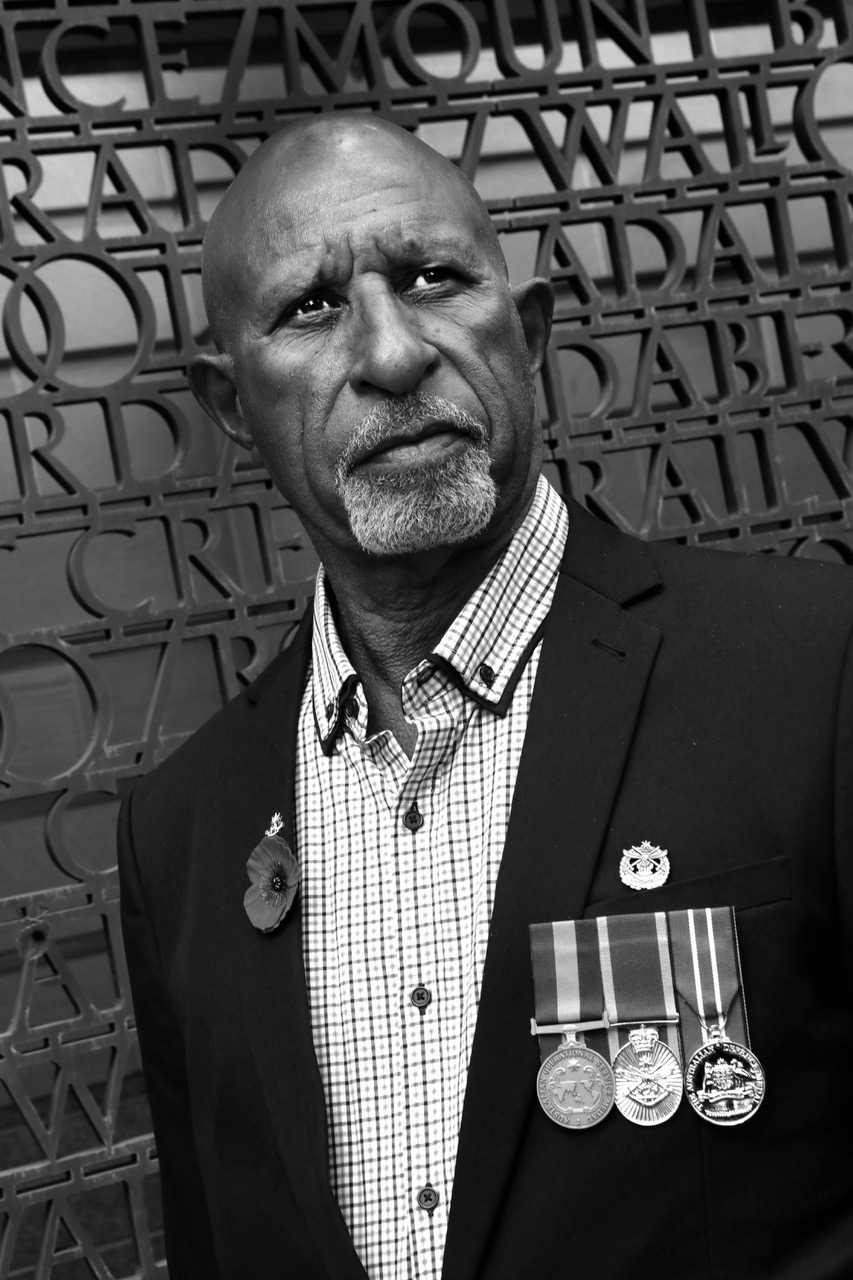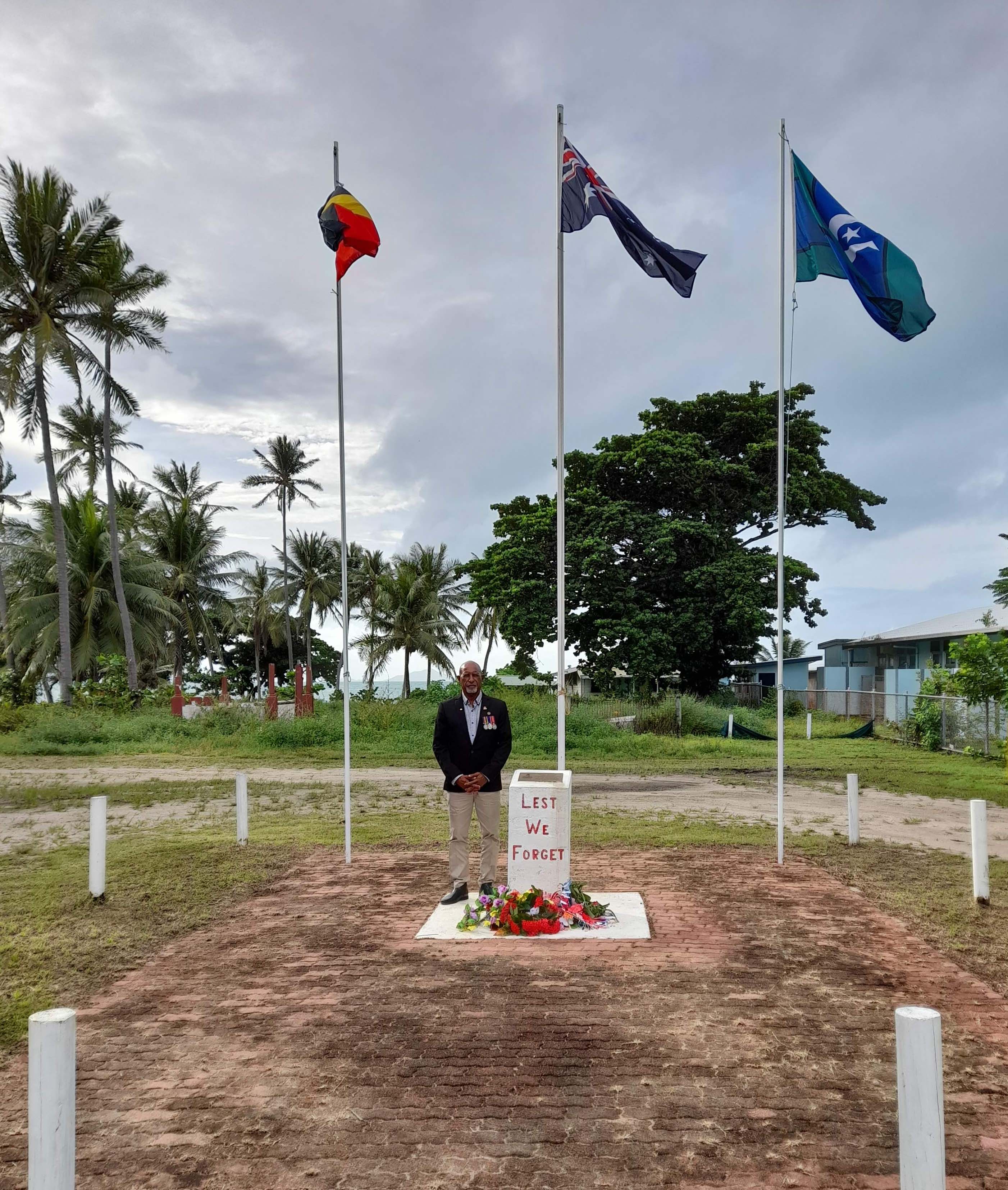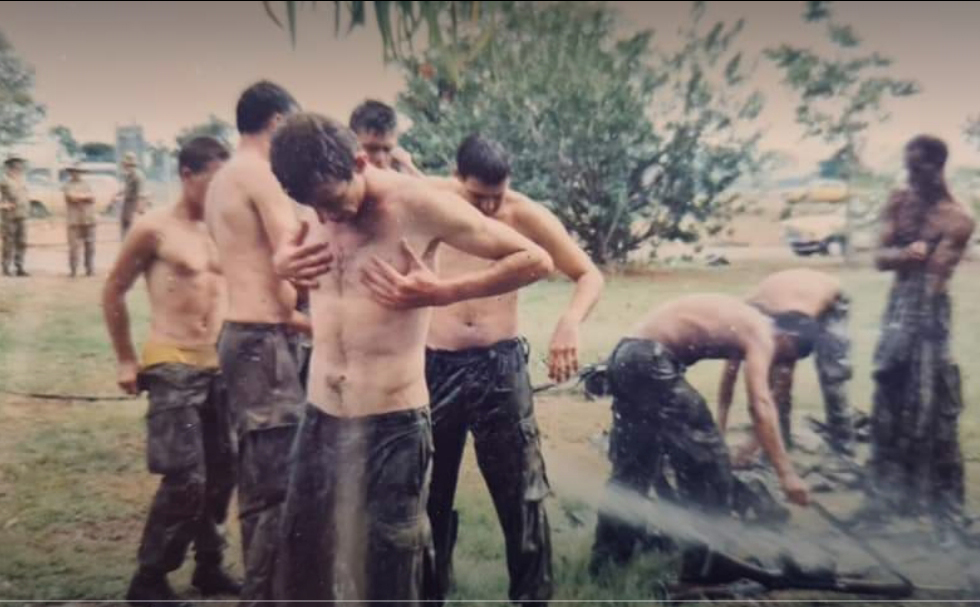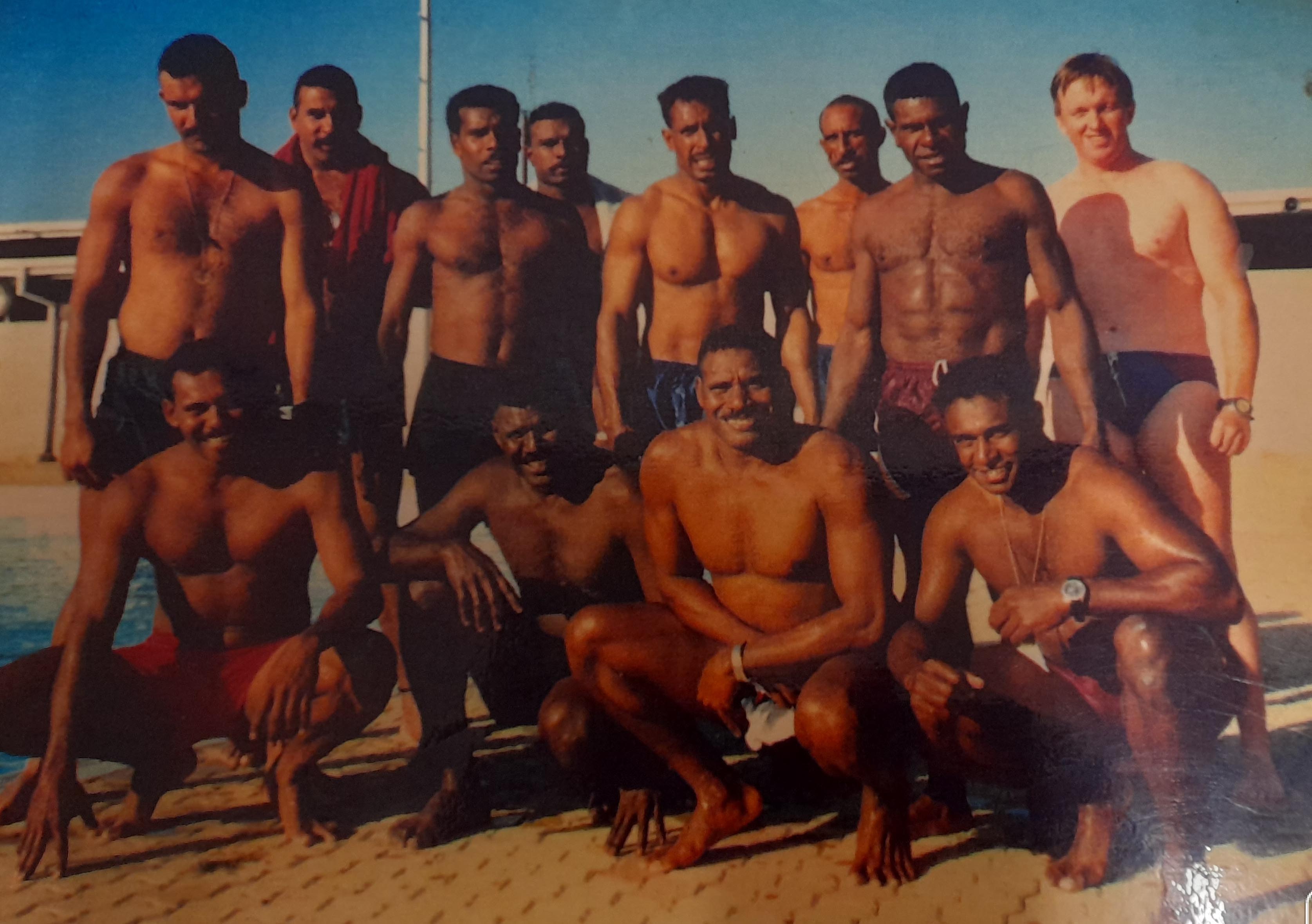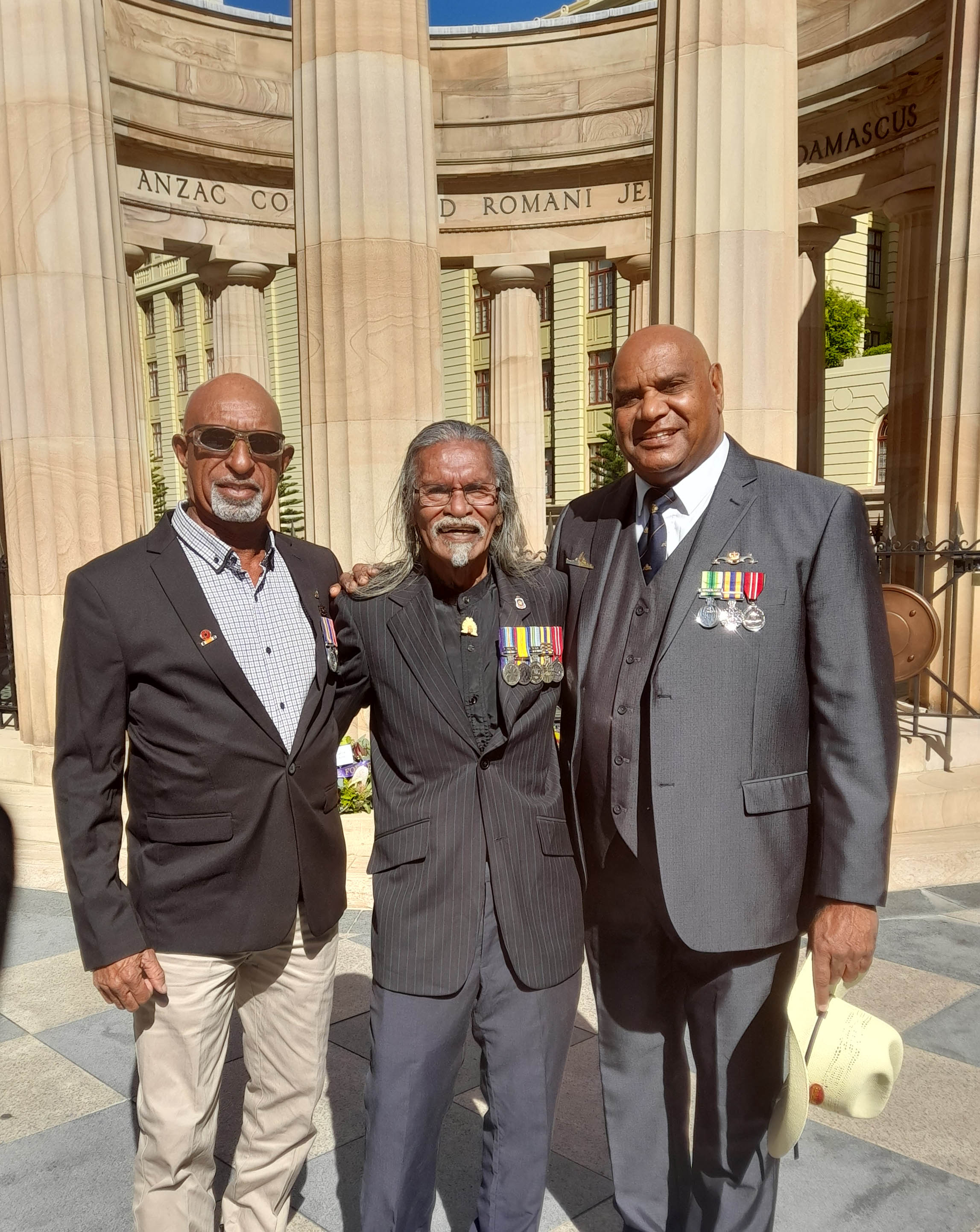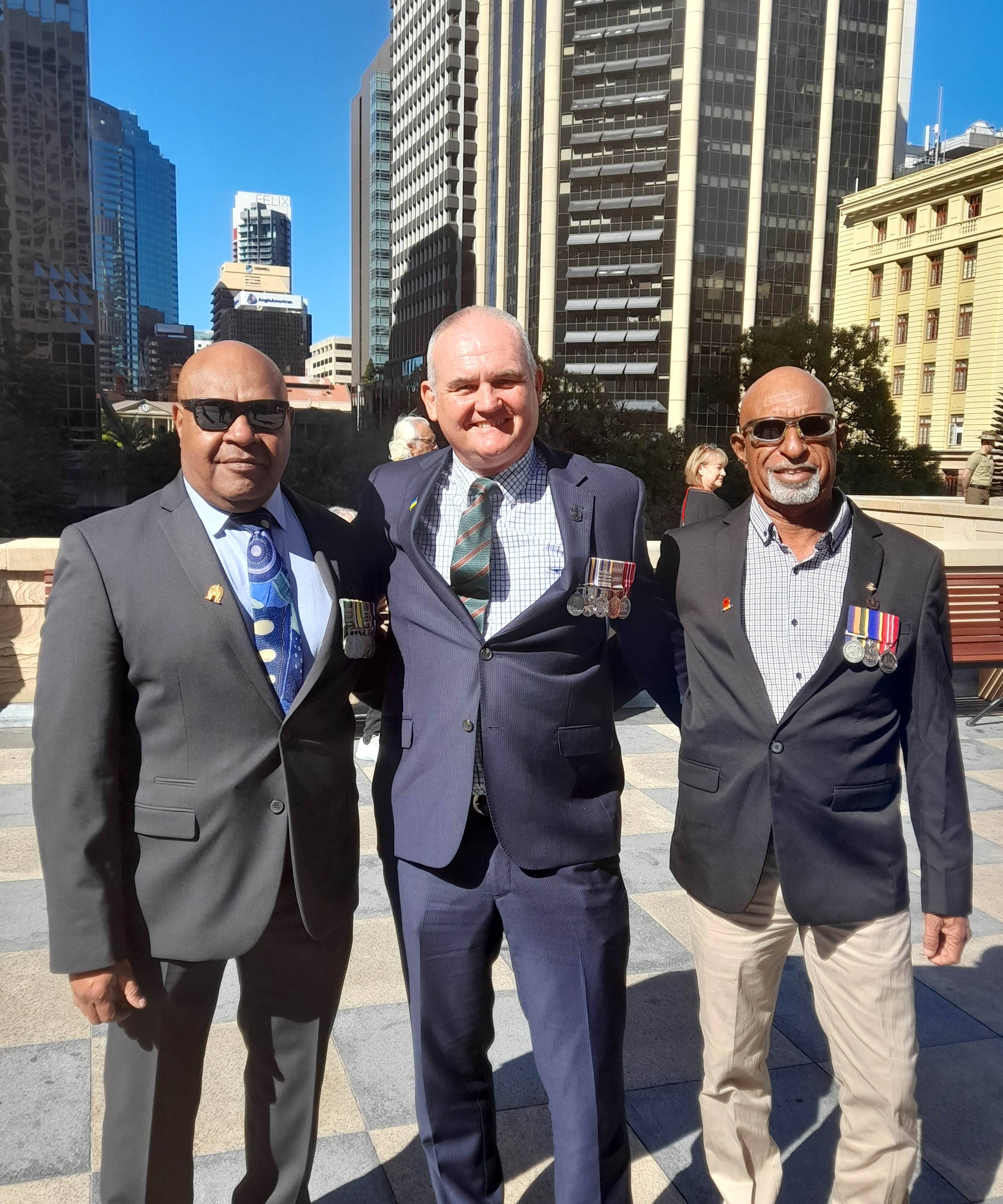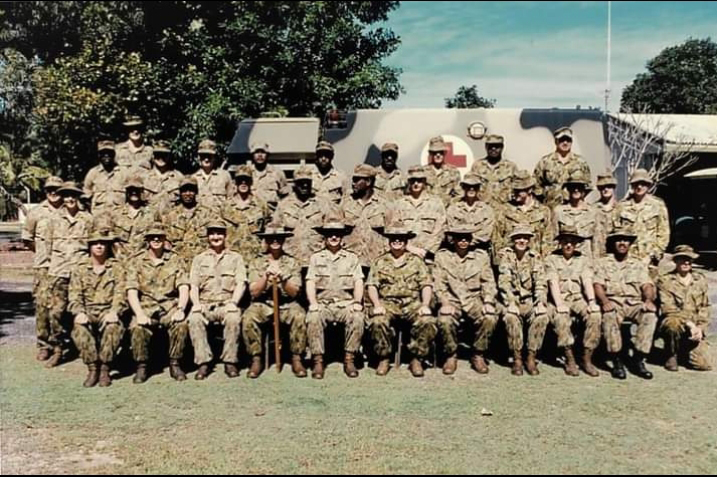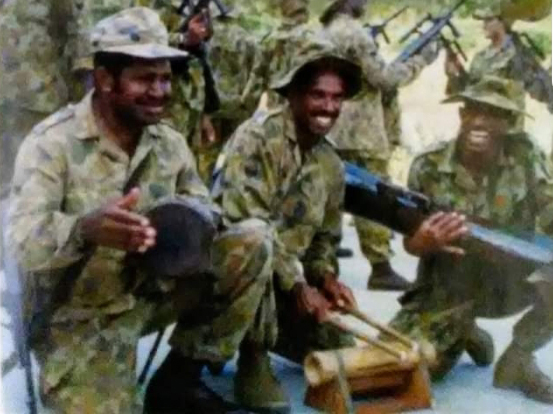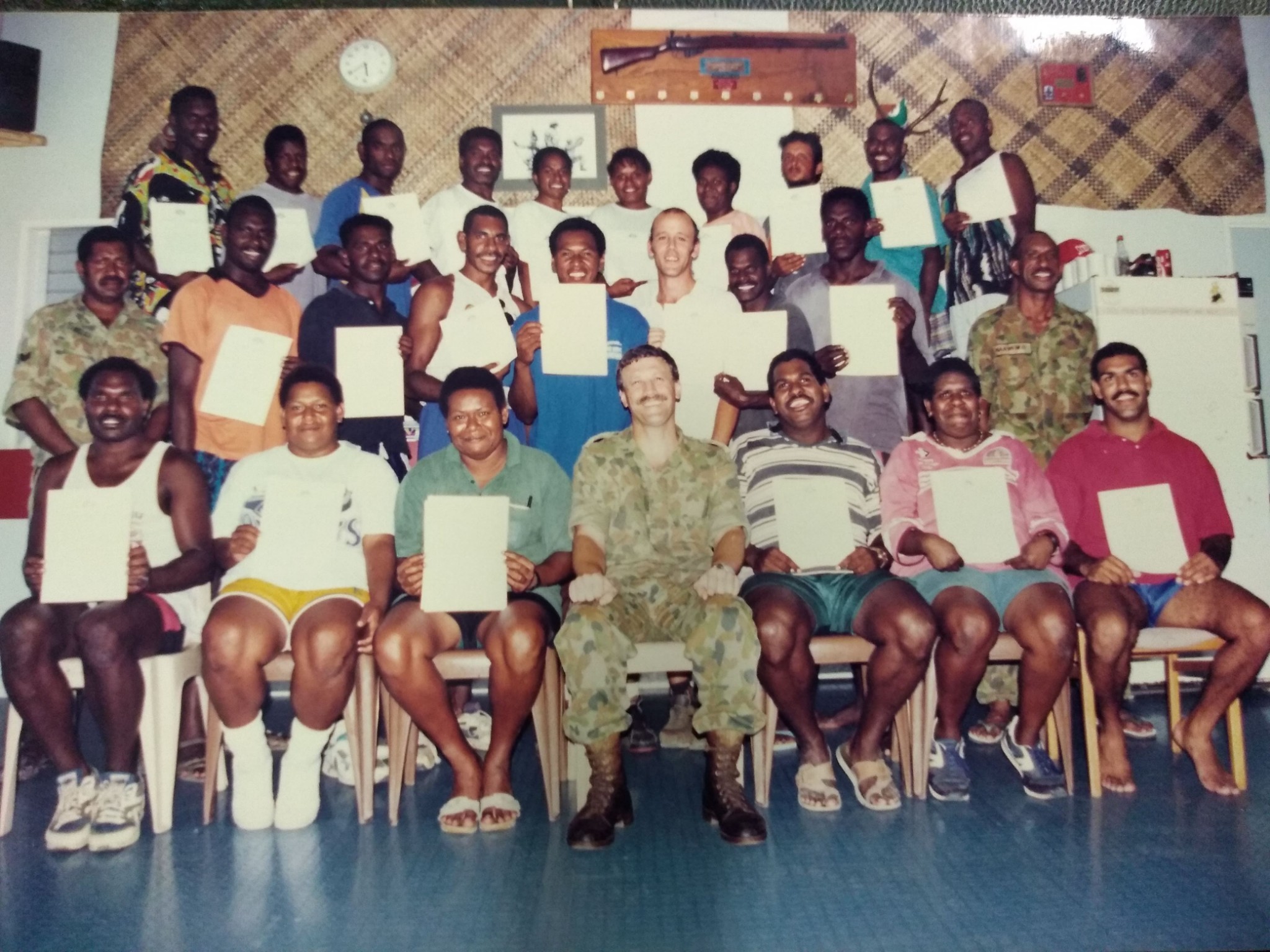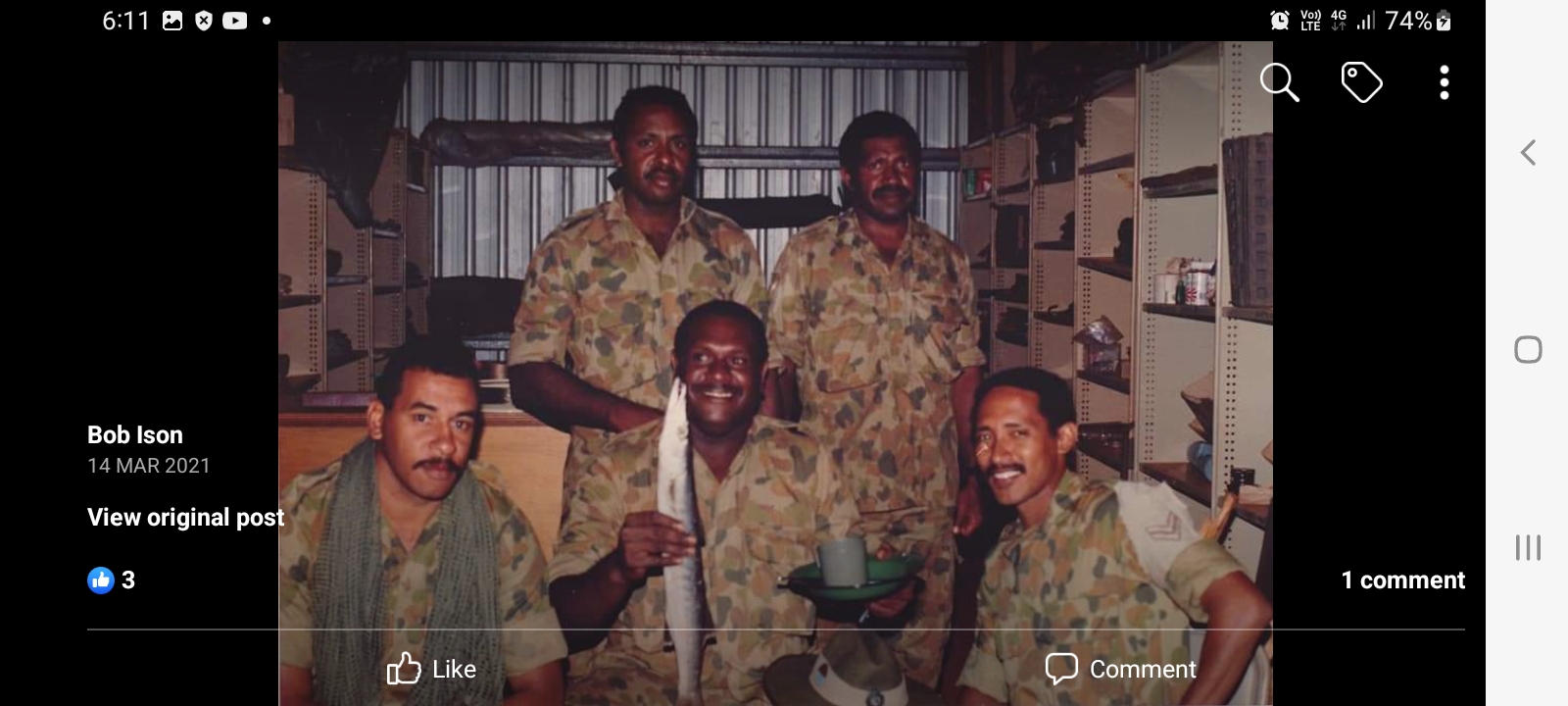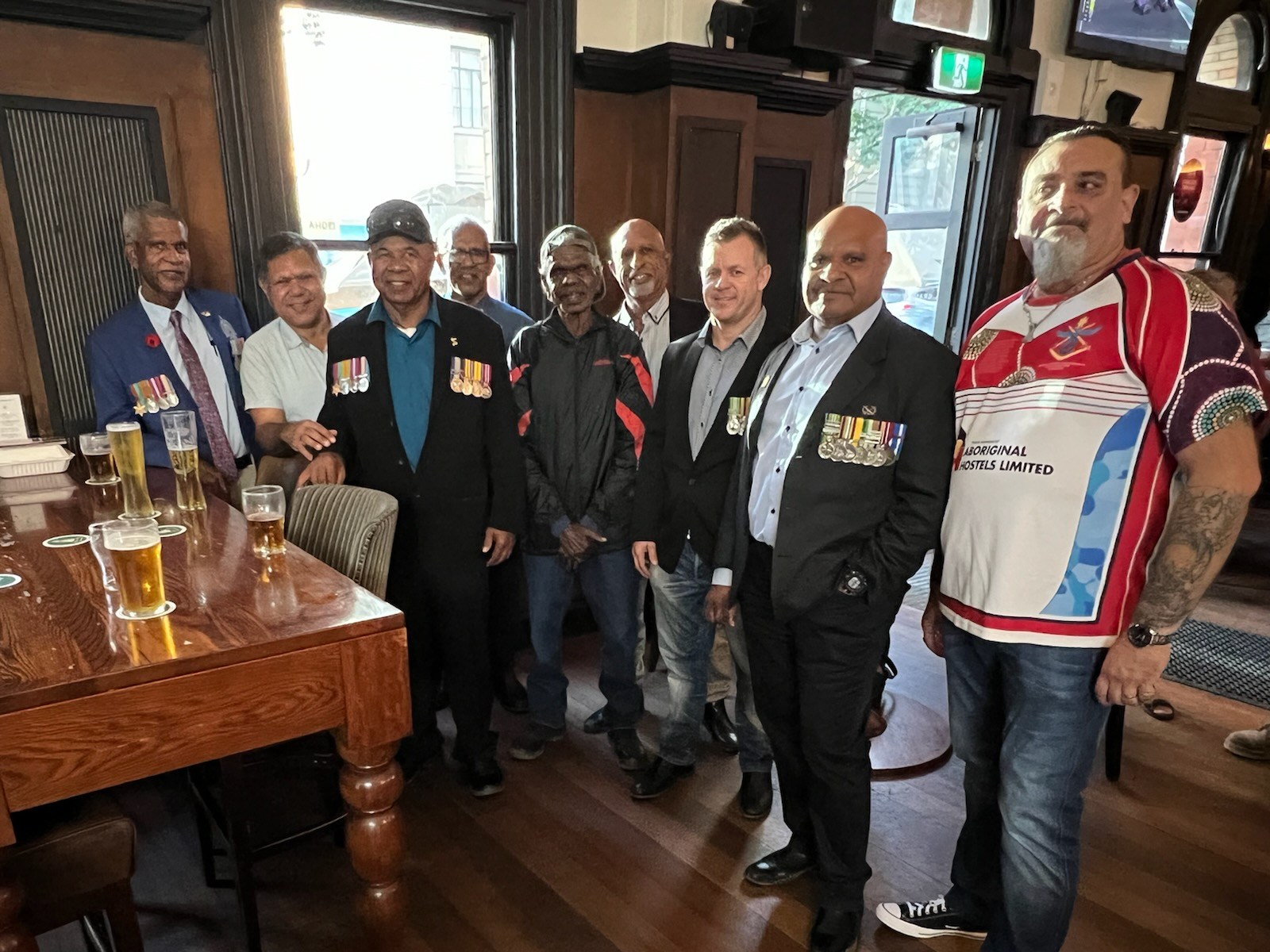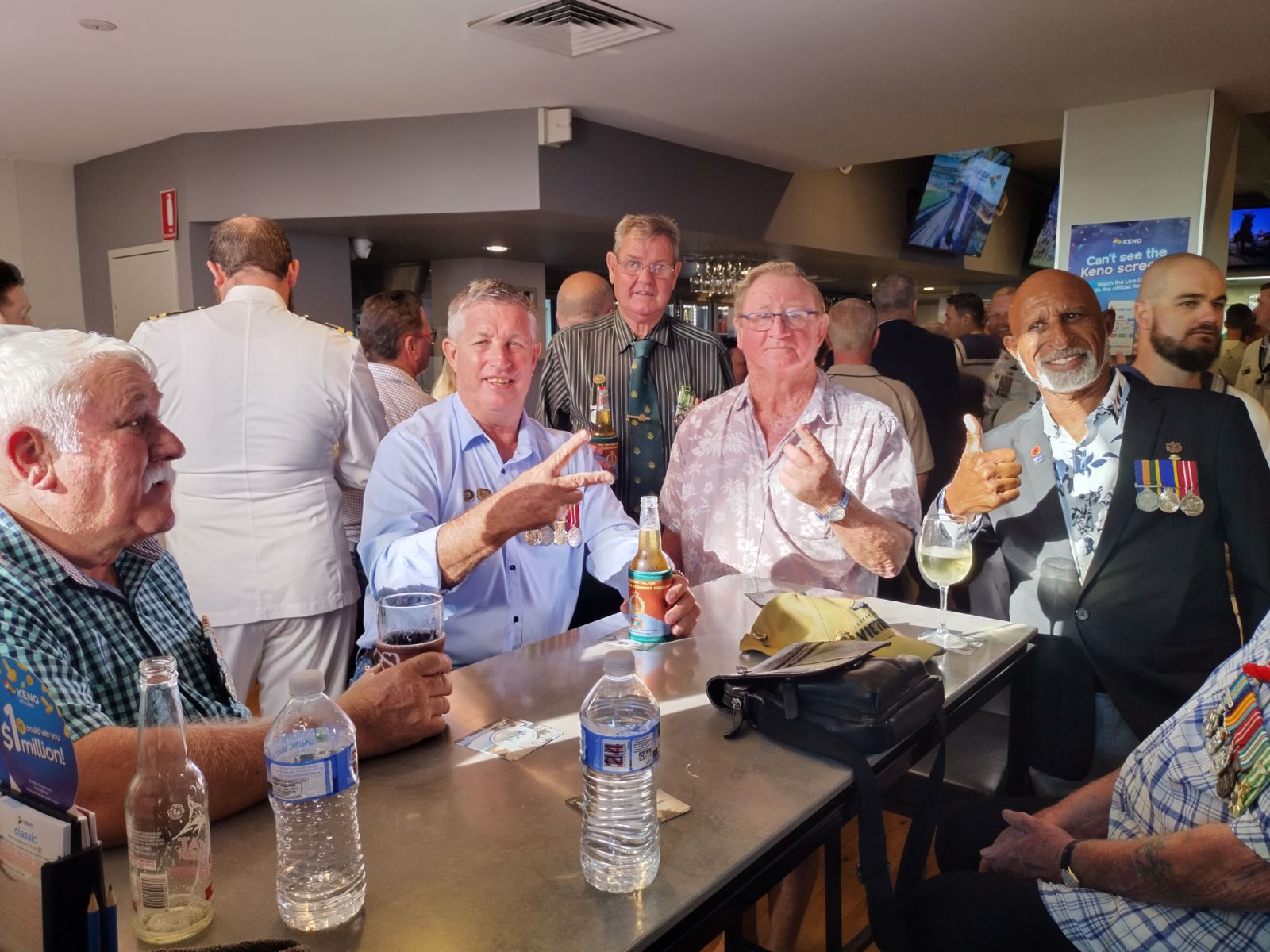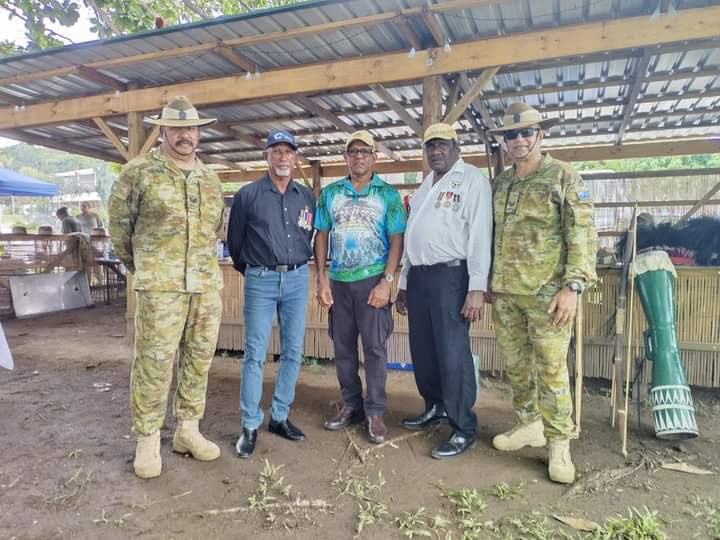Charlie Monty Naawi
Masig Island, Torres Strait Islands
Sergeant
49th Battalion, Royal Queensland Regiment 1980
Royal Australian Infantry Corps
51st Battalion, Far North Queensland Regiment 1985
Regional Force Surveillance Group
Australian Army Reserve
Training Sergeant 22 years
Medals
Australian Operational Service Medal – Border Protection
Reserve Force Medal (25 years of service)
Australian Defence Medal
Operational Service Badge
As a child, I went to Yorke Island Primary School, and then, I spent my high school years at Bamaga State High School. After WW2, there were no recruitment drives in the Torres Strait. The first recruitment drive happened in 1978. On the 4th of July 1980, I enlisted alongside three of my brothers from Masig Island, Private Daniel W. Mosby, Private George S. Billy and Corporal Kevin Elia, and joined the 49th Battalion at Yorke Island. The 49th Battalion was situated west of Brisbane City at Wacol Army Camp, which was renamed Sanananda Barracks. I served as an infantry soldier for 6 years, and then at the end of 1986, I transferred to 51st IRC (Independent Rifle Company) North Queensland in Cairns. During my time at the 49th Battalion, there were a lot of boys from Thursday Island and Bamaga also serving at the same time as I was. My sister, Corporal Josie Naawi, and my brother, 1st Lieutenant Arthur Naawi, joined the 49th Battalion two years later, while my brother, Lance Corporal Simon Naawi, joined the 51st Independent Rifle Company in Cairns in 1986. In 1987, I was awarded the Soldier’s Fly Trophy for taking just 3.5 hours to carry a 30-litre jerry can filled with water from St. Paul Community to Moa Peak, on Banks Island and also the highest peak in the Torres Strait. While serving, I participated in Exercise K81 and did a lot of infantry training at Saltwater Bay, Townsville High Range, Canungra, and also attended the Field Force Battle School in Tully.
After completing Subject 1 and 2 for Promotion courses, I was promoted to a full corporal in 1988. This was about the time when the 51st IRC (Independent Rifle Company) changed its name to become the 51st Battalion, Far North Queensland Regiment, making it a reconnaissance battalion. We did a lot of water operations, vehicle patrols, and parachute jumping. We were instructed by 3RAR (Royal Australian Regiment) on foot patrol and close reconnaissance manoeuvres. We also trained with the SAS in fieldcraft, close close reconnaissance and survival training. We also did recruitment drives and recruitment training across our Area of Operations (AO). Every year, we do a Military Skill competition between all Army Reservists in Queensland. Charlie Company, Torres Strait, my company always comes out on top. Our AO is from Cairns to Innisfail, Mount Isa, Burke Town, Weipa, Bamaga, Thursday Island, Boigu Island, Saibai Island (which is 6km from the PNG border), Erub Island, Stephen Island, Murray Island, Mount Adolphus, Lockhart River and back to Cairns. The Torres Strait communities are the only group of Australians that have a treaty for free movement between PNG and the Torres Strait, which means they don’t require a passport to enter the Torres Strait, but they do need a passport to enter the mainland of Australia. Therefore, our primary role is the prevention of illegal immigration and the protection of our native wildlife from poachers.
In 1990, I was posted to join the training team in Cairns and completed my Subject 1 and 2 courses for Sergeant and Torres Strait Indigenous Translator at Gallipoli Barracks in Enoggera. Then, after further training, I was promoted to Sergeant in 1992. During my time in the Defence Force, our work with Border Force, Federal Police, Queensland Police, and local community focussed on border protection between Australia and Papua New Guinea. Between 17-30 July 2001, Bill Battleworth, Company Sergeant Major (CSM) from Charlie Company 51st Battalion on Thursday Island, Torres Strait and I took 14 Australian civilians from various government agencies, including AusAid, Department of Foreign Affairs and Trade (DFAT) and Prime Minister and Cabinet (PM&C), to Bamaga and Goodes Island for training, showing them field craft skills and how to live off the land. The oldest was 64 years of age. After training, they were posted to Papua New Guinea as a peace monitoring group in Bougainville.
At the end of 2004, I decided to be discharged from the Defence Force, as I wanted to do something different after a long and enjoyable 29 years in the Force. I enjoyed serving in the Defence Force and lived life to the fullest. Along the way, I made many multicultural friends and learned a lot about the Defence Force. The Defence Force taught me the skills to Improvise, Adapt, and Overcome anything life put in front of me.
